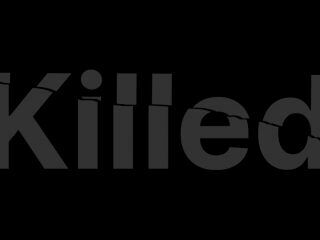There was a time when websites were becoming a thing of the past. They were a nuisance that brands had to have in order to check a box on some marketing director’s to-do list for the year, but they were seen as somewhat of a chore, not a core part of business needs.
This had happened for a very simple reason. Facebook was eating up all internet traffic and it had become pretty superfluous to put time and effort behind a site. To make matters worse, Facebook was giving away a lot of free traffic, too, so brands could be found more easily on Facebook organically than they could on Google.
This made the need for sites nearly redundant, because even if you had a great site (and more so if you were a B2C brand), your site was not going to get that much traffic. People would even initiate most searches on Facebook, and even when they didn’t, your Facebook page would probably rank even higher than your own site on Google.
But times have changed. Facebook has stopped giving any real organic traffic, and now the only way to be seen by a good number of your customers on the platform is if you pay for the privilege.
Even when you do pay for the visibility you’re hampered by all the limitations of the platform, and you’re still showing your content on a site that’s doing its best to keep people on it. Your site, on the other hand, can be built in a way that works for your business, not Mark Zuckerberg’s. He’s rich enough.
So what should you do? You should build a site that’s at the centre of your communication efforts. You should, if I may say so myself, work with an agency like ours, one that understands what all your messaging is and then finds a way of displaying it conveniently for your audiences.
I’m going to be very kind and assume that anyone you work with will get the technical side of things correct. It’s a long shot, I know, but there’s a ton of great resources to cover that. If you need one you can see the ultimate web design checklist that covers it all. No use reinventing the wheel.
What I’d like to cover today is the high level plan of the site, the part that is much more about communications than about the actual nuts and bolts of the site. Anyone can get that right.
From a content and structure point of view, a good web design and development agency, or a good web planner, will understand that any website should:
Be built to convert.
The website should be built to convert your visitors somehow or other, either into customers, into leads, into sales, or into fans. You should never waste traffic. Build a plan for every kind of visitor that you get and make it a point to have a goal (or multiple goals) for each. You won’t hit that goal with every visitor, but I can guarantee you that you will not hit a single goal that you don’t set. If you’re selling online, for example, then your primary target will be to close a sale, but if your visitor is not ready to purchase then you should at least get them to give you an email address or to share a product. Failing that you can place them into a bucket to hit them again with advertising at a later stage.
Cater for your different audiences.
While also making it seamless for them to navigate through. Some people will land on your site because they are ready to buy, others are there to research a product or solution that you offer. Make it easy for clients to choose where they want to go, and lat your site out in a way that will solve your visitors’ problems without creating new ones for them.
Host your content in a way that’s easy to browse and share.
It’s all well and good if your site looks incredibly sexy from miles away, but if the experience is frustrating for users, then it’s not really fulfilling its function. Some people are awestruck by inspirational experiences, and if that’s what you’re aiming for, then you should excel at it, but don’t play around with fancy stuff if you’re giving your audience a 5,000 word blog post to read. Just give them the text and informative images.
Tell your visitors about you, who you are, what you stand for.
It might sound obvious, but make it easy for your visitors to find out who you are and what drives you. If people find it hard to learn about who’s behind a brand, or at least why the brand exists, then they’ll have trouble trusting it.
Act as an extension to your social media activity.
Your website should include versions of the content that you create for social media. I’m not saying that you should have a feed that automatically pulls posts from your Facebook feed, that’s lazy, but you should make it a point to keep your website as updated as you would update your Facebook or LinkedIn profiles. But the medium is different, so make it a point to create content that makes sense in the context of a site.
Once we’ve established some of the key elements that need to go into a great site for the roaring 20s, I think that it’s time to see how we will get there. It’s not as hard as it might seem, all it needs is a bit of thought before we get started.
In order to do this you need to start off your planning before you start designing and developing, and you should work on a strategy for your site that will tie down:
- Your audiences
- Your goals (for each audience, if they differ)
- Where you’re going to get your traffic from
- What you’re going to do with your traffic
- What behaviour you’re expecting from your visitors
And in the end…
Websites are here to stay. They’re more important than ever, and you need to work with a good partner to get yours right. A good website will give you control over your narrative and will help you stand out from the crowd. If you want to have a chat about your next site, feel free to get in touch, we’d love to help you.




